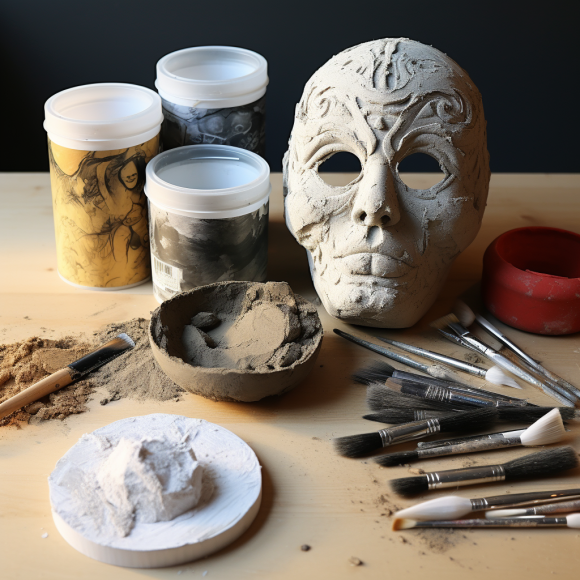Papier mâché, a versatile and fascinating art form, has a rich history that dates back centuries. Its name, derived from the French words “papier” (paper) and “mâché” (mashed or kneaded), accurately reflects the primary components and process involved in creating this unique medium. This introductory article delves into the origins and historical development of papier mâché, shedding light on its journey from ancient civilizations to modern-day artistic expressions.
Ancient Roots of Papier Mâché: A Historical Overview
The roots of papier mâché can be traced back to ancient civilizations, including Egypt, Persia, and China. In Egypt, papyrus scrolls were often used for religious texts and artistic purposes, laying the groundwork for working with paper-based materials. Similarly, Persians and Chinese artists developed techniques using paper and a mixture of glues to create intricate masks, ornaments, and decorations.
The Renaissance Period: Papier Mâché in Europe
During the Renaissance era, papier mâché gained popularity in Europe as an accessible and cost-effective alternative to wood and other materials. Its lightweight and moldable properties made it ideal for crafting masks, theatrical props, and decorative items. The technique soon spread across the continent, with Venice emerging as a significant hub for papier mâché production and trade.
Papier Mâché in the 18th Century: A Golden Age
The 18th century marked a golden age for papier mâché, particularly in England and France. Skilled artisans crafted elaborate furniture, snuffboxes, and fashion accessories, showcasing the versatility and intricacy of the medium. This period witnessed the rise of “Toleware,” a decorative technique that involved applying painted papier mâché to metal surfaces, creating vibrant and elegant designs.
Papier Mâché in the Americas: A Diverse Craft Tradition
As papier mâché techniques spread to the Americas, they merged with indigenous artistic traditions, resulting in a rich and diverse craft heritage. In South and Central America, “Cartonería” became a popular art form, with artisans crafting vibrant piñatas, masks, and sculptures for religious festivals and celebrations. In the United States, papier mâché was utilized for practical items such as hat molds and trays, as well as decorative pieces.
Papier Mâché in Modern Art: Innovations and Revivals
The 20th and 21st centuries witnessed a resurgence of interest in papier mâché as an artistic medium. Artists and sculptors explored its potential for large-scale installations, mixed media creations, and environmentally friendly works. The use of recycled materials in papier mâché aligns with contemporary eco-consciousness and sustainable art practices.
Contemporary Papier Mâché: A Playground of Creativity
Today, papier mâché remains a dynamic and engaging art form, inspiring artists of all ages and backgrounds. Its versatility and accessibility allow for endless possibilities, from intricate sculptures and masks to whimsical decorations and functional objects. The internet and social media have facilitated global sharing of techniques, patterns, and ideas, fostering a vibrant and supportive community of papier mâché enthusiasts.
Conclusion: The Timeless Allure of Papier Mâché
Papier mâché continues to captivate artists and art lovers worldwide, blending history and innovation into a delightful medium of boundless creativity. Its origins in ancient civilizations, journey through the Renaissance, and contemporary revival demonstrate its enduring charm and adaptability. Whether used for practical purposes, cultural celebrations, or artistic expression, papier mâché embodies the timeless allure of handmade craftsmanship.
Stay tuned for more exciting articles on papier mâché techniques, projects, and inspirations as we explore the world of this captivating art form together.
